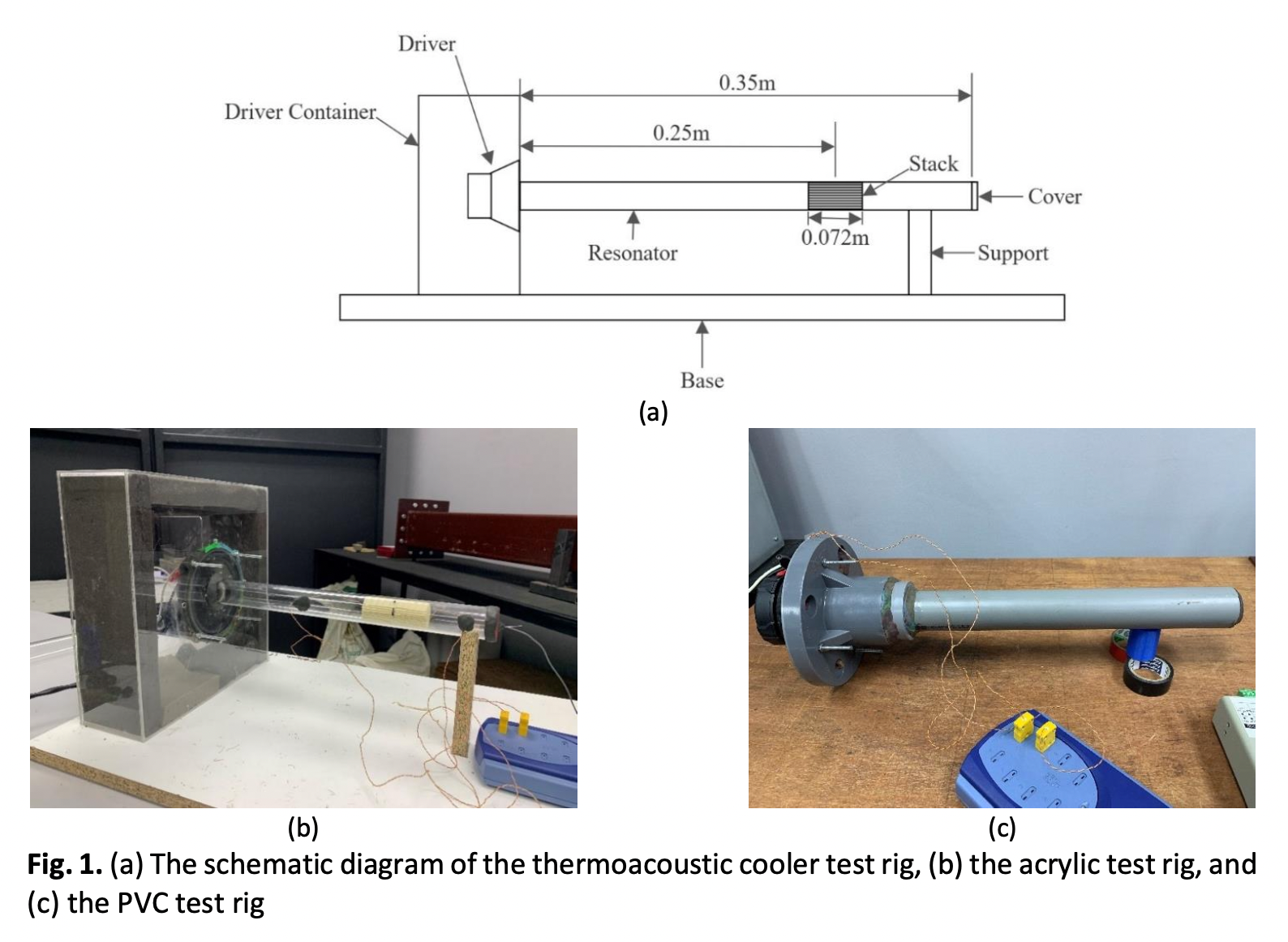Thermoacoustic Cooler with Different Waveform Excitations and the Noise Control Test
DOI:
https://doi.org/10.37934/arfmts.116.1.1726Keywords:
Thermoacoustics, wave forms, resonance, noise controlAbstract
Many researchers have been devoted into improving the operation of thermoacoustic cooling system as it offers a promising alternative to traditional cooling methods. This study reported potential system’s improvements that can be obtained when it is operated with different excitation of waveforms and resonator’s material. Resonant test was first carried out to identify the frequency for the operation. Temperature drop that can be obtained by the system was then tested for sine wave, square wave and triangle wave excitations. It was found that a change in resonator material alters the resonance frequency for the operation. Resonance was recorded at 186.6 Hz when acrylic resonator was used while a resonance frequency of 170.5 Hz was found when polyvinyl-chloride’s resonator was used. In term of temperature effects, the square wave excitation resulted to the maximum temperature difference of 45.64˚°C in the acrylic resonator, followed by sine wave at 43.46°C and triangle wave came in last at 40.11°C. Then, as the polyvinyl-chloride’s resonator was used, smaller values of maximum temperature was observed with 38.07°C, 35.94°C and 30.05°C for square wave, sine wave and triangle wave, respectively.
Downloads

































